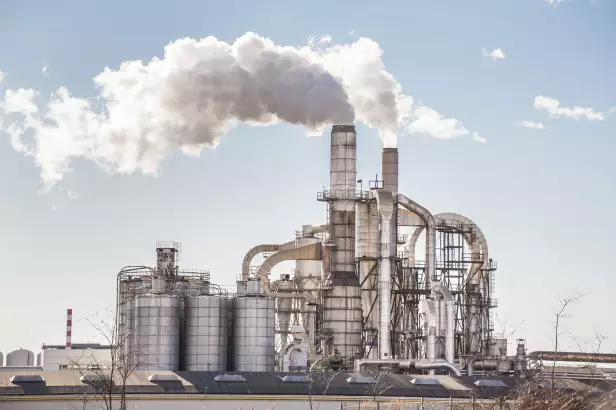What are the regulations for using an RTO for air pollution control?
Introduction
Air pollution is a significant environmental concern that affects the health and well-being of communities worldwide. To combat this issue, regulatory bodies have established regulations for the use of Regenerative Thermal Oxidizers (RTOs) as an effective air pollution control technology. RTOs are widely used in various industries to minimize emissions of harmful pollutants. This article will explore the regulations governing the use of RTOs for air pollution control, highlighting their importance and impact.
Regulatory Framework
– National Emission Standards: Countries have implemented national emission standards that specify the permissible limits for various pollutants emitted by industrial processes. These standards often include specific requirements for the installation and operation of RTOs.
– Environmental Permits: Industries are typically required to obtain environmental permits that outline the conditions and standards they must meet to operate legally. These permits often include provisions for the use of RTOs and may require regular monitoring and reporting of emissions.
– Compliance Monitoring: Regulatory agencies conduct regular inspections and emissions testing to ensure compliance with air pollution control regulations. This involves assessing the performance of RTOs in reducing pollutant emissions and verifying that they meet required efficiency levels.
– Reporting and Documentation: Industries may be obligated to submit regular reports documenting RTO performance, maintenance activities, and emission levels. This information helps regulatory agencies track progress and identify areas for improvement.
Requirements for RTOs
RTOs must meet certain technical specifications and performance criteria to ensure effective air pollution control. These requirements may vary depending on the specific industry and the pollutants being targeted. Some common aspects include:
– Destruction Efficiency: RTOs must achieve high destruction efficiency, typically exceeding 99%, to effectively remove pollutants from exhaust streams. This ensures that the emissions released into the atmosphere are minimized.
– Heat Recovery: RTOs are designed to recover and reuse heat generated during the oxidation process. This helps optimize energy efficiency and reduce operating costs.
– Monitoring Systems: RTOs often incorporate advanced monitoring systems to track process parameters, temperature profiles, and pollutant concentrations. Continuous monitoring ensures prompt detection of any deviations or malfunctions.
– Maintenance and Inspections: Regular maintenance and inspections are essential to keep RTOs operating optimally. Industries must adhere to maintenance schedules, conduct inspections, and promptly address any issues to ensure compliance with regulations.
Benefits of RTOs
The use of RTOs for air pollution control offers several significant benefits:
– Effective Emission Reduction: RTOs are highly efficient in removing pollutants, thereby significantly reducing emissions of harmful substances such as volatile organic compounds (VOCs) and hazardous air pollutants (HAPs).
– Energy Efficiency: By recovering and reusing heat, RTOs help minimize energy consumption and reduce greenhouse gas emissions associated with traditional pollution control methods.
– Cost-Effectiveness: While the initial investment for installing an RTO can be substantial, the long-term operational and maintenance costs are often lower compared to other control technologies.
– Regulatory Compliance: Utilizing RTOs ensures that industries meet the required emission standards and comply with environmental regulations, avoiding potential penalties and legal issues.
Conclusion
In conclusion, the regulations for using RTOs in air pollution control are critical for maintaining environmental quality and protecting public health. These regulations establish rigorous requirements for the installation, operation, and maintenance of RTOs. By complying with these regulations, industries can effectively reduce their emissions and contribute to a cleaner and healthier environment.


Company Introduction
Our company is a high-tech enterprise specializing in the comprehensive treatment of volatile organic compounds (VOCs) and carbon reduction energy-saving technology for air pollution control. Our core technologies include thermal energy, combustion, sealing, and self-control. We have the capabilities for temperature field simulation, air flow field simulation modeling, ceramic heat storage material performance, molecular sieve adsorption material selection for VOCs, and high-temperature incineration and oxidation testing of organic pollutants.
Team Strengths
We have an RTO technology R&D center and waste gas carbon reduction engineering technology center in Xi’an, and a 30,000 square meter production base in Yangling. As a leading manufacturer of RTO equipment and molecular sieve wheel equipment globally, our core technology team comes from the Aerospace Liquid Rocket Engine Research Institute (Aerospace Sixth Academy). We currently have more than 360 employees, including over 60 R&D technical backbone members, including 3 senior engineers at the research fellow level, 6 senior engineers, and 47 thermodynamics doctors.
Core Products
Our core products include the Rotary Valve Regenerative Thermal Oxidizer (RTO) and molecular sieve adsorption and concentration wheel. Combined with our expertise in environmental protection and thermal energy system engineering, we can provide customers with comprehensive solutions for industrial waste gas treatment, carbon reduction, and thermal energy utilization under various operating conditions.

Certifications, Patents, and Honors
- Intellectual Property Management System Certification
- Quality Management System Certification
- Environmental Management System Certification
- Construction Industry Enterprise Qualification
- High-tech Enterprise
- Patent for Rotary Valve Regenerative Thermal Oxidizer
- Patent for Rotary Heat Storage Incineration Device
- Patent for Disc Zeolite Wheel

Choosing the Right RTO Equipment
- Determine the characteristics of the waste gas
- Understand the local regulations and emission standards
- Evaluate energy efficiency
- Consider operation and maintenance
- Budget and cost analysis
- Select the appropriate type of RTO equipment
- Consider environmental and safety factors
- Perform performance testing and verification
RTO Air Pollution Control Service Process
- Preliminary consultation, site inspection, and needs analysis
- Solution design, simulation modeling, and solution review
- Customized production, quality control, and factory testing
- On-site installation, commissioning, and training services
- Regular maintenance, technical support, and spare parts supply
We are a one-stop solution for RTO air pollution control, providing customized RTO solutions tailored to our customers’ needs. Our professional team is dedicated to delivering high-quality services.
Author: Miya
